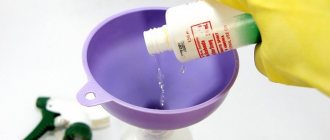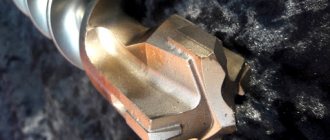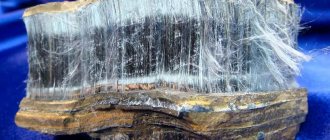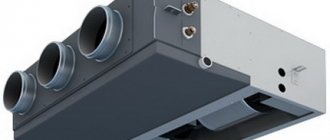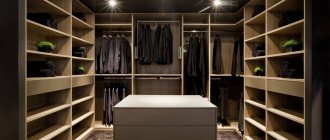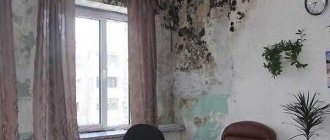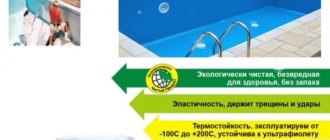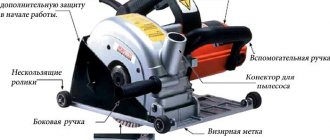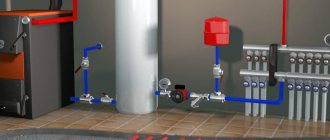Deep penetration antifungal primer for concrete is a means that helps prevent the appearance and proliferation of spores of dangerous microorganisms on the surface. The treatment is carried out using special substances at the final stage of construction, before the start of work on the decorative finishing of the walls.
Due to the fact that concrete has a porous structure, spores of microorganisms very easily penetrate into the base where a favorable environment is created for their growth. The fungus multiplies extremely quickly; treating surfaces is much more expensive and requires much more effort and time than prevention with antifungal drugs.
Danger of fungus and mold
Mold usually appears where concrete bases are exposed to moisture, steam, or strong temperature changes. In residential premises, these are bathrooms, bathrooms, kitchens, rooms where the heating is not constantly turned on, etc. It is better to treat all surfaces where there is a risk of the spread of microorganisms prophylactically, without waiting for a problem to arise.
After all, fungus and mold are very dangerous to health - they release mycotoxins, their spores spread by airborne droplets, quickly enter the respiratory organs, causing a number of health problems: chronic fatigue, decreased immunity, allergic reactions, migraines, diathesis, bronchitis, asthma, rhinitis , otitis. In cases of severe infection, even problems in the functioning of the cardiovascular system, irreversible damage to internal organs, and cancer are possible.
In addition, the spores penetrate deep into the material and the fungus quickly destroys the surface on which it appears. And literally a few months after the first dark spots appear, the finish becomes loose, peels off freely, collapses and literally burns.
Getting rid of fungus is extremely difficult - in the process of treating a surface, you must carefully follow safety rules, wash all clothes at once, use special tools and means to prevent the spread of flying invisible spores further throughout your home, and prevent them from entering the respiratory tract. It is much easier and safer to immediately treat substrates in rooms with high humidity, so as not to give the parasite a chance.
Reasons for appearance
The main reason for the appearance of fungus is dampness. The reason for this may be:
- Periodic leaks from neighbors above due to careless use of plumbing;
Most often, the cause of leaks is poor-quality sealing of the junction of the bathtub to the wall, coupled with missing waterproofing of the floor.
The seam between the wall and the bathtub, if sealed poorly, will cause puddles on the floor.
- Malfunctions of plumbing fixtures (leaky gaskets under faucets, on swivel jaws, worn seals on valves);
- Defects in water supply lines and risers (fistulas, leaks in threaded connections);
- Caulking of sewer pipes (both risers and internal ones);
Sewer elbow leaking under the sink.
- Freezing of walls and window slopes.
Freezing
The last point is worth dwelling on in more detail. What is freezing and what causes it? Let's remember physics.
As you know, the ability of air to hold water vapor depends on its temperature. The warmer it is, the more water can remain in its gaseous state. When the air temperature drops, excess water condenses and falls on the nearest surface as dew.
This mechanism is most easily demonstrated using the example of a fogged bottle taken out of the refrigerator.
If one surface in the room is noticeably colder than all the others, water will condense on it - simply because the air in contact with the cold surface is sharply cooled. To start this process, the surface temperature must be below the dew point, which, in turn, depends on the air temperature in the room and its humidity.
Dependence of dew point on temperature and relative humidity.
Therefore, to get rid of condensation, you need to either warm up the freezing wall or reduce the humidity in the room.
Why one of the walls turns out to be colder than other surfaces in the room is not difficult to guess: for this it is enough that the wall adjoins the outer corner of the building and does not have external insulation.
The same mechanism works with slopes: their surface is cooled simply due to the fact that in the window opening the outer walls are thinner and cool more strongly on the inside.
Wet plaster slope.
High humidity in residential areas should also be addressed separately. Most often, the cause of an uncontrolled increase in humidity is... replacing windows from wooden to plastic.
Why?
The ventilation system of a typical apartment in a Soviet-built building works like this:
- The hood is carried out through ventilation ducts located in the kitchen, bathroom and toilet;
The photo shows an exhaust grille in the bathroom.
- The leaky entrance door and wooden windows are responsible for the influx. Fresh air enters the rooms through the gaps between the frame and the frame.
The window is part of the apartment’s ventilation system.
Remember that to insulate windows for the winter, we have always used breathable materials - cotton wool and foam rubber.
Thanks to rubber seals, plastic windows are absolutely airtight. By closing the windows, we ourselves block the normal operation of ventilation in living rooms and in the kitchen.
Thanks to rubber seals, a closed plastic window is airtight.
The price of beauty and ease of use of plastic windows is quite predictable:
- After a short time, a characteristic musty smell appears in the rooms;
- Air humidity begins to rise. In the process of any economic activity (washing dishes, floors, laundry), as well as in the process of our own life activity, we saturate the atmosphere of the room with water vapor, which is no longer displaced by the supply air;
- Finally, at some point, the water vapor content reaches a level at which the temperature of the walls and/or slopes corresponds to the point of water condensation. The walls begin to freeze, and after the condensation, its faithful companion very soon appears - fungus.
Freezing of the outer wall in a panel house.
A special case
The cause of freezing, as I mentioned above, can be improper insulation of external walls. Specifically, insulation from the inside without vapor barrier of the insulation from the side of the room.
What will happen in this case?
Air saturated with water vapor will fall under the insulation and come into contact with the cold outer wall. Water vapor will condense on its surface; in the absence of normal ventilation, both the wall and part of the insulation will very quickly be affected by mold. The owner becomes aware of the problem only when water begins to flow out from under the finish and form puddles on the floor.
To avoid this problem, facades are usually insulated from the outside.
Signs and causes of fungus formation
Impregnation against mold and mildew for concrete is used at the stage of repair and construction work. However, for high-quality protection of premises, it is necessary to study the causes of the appearance of fungus and the “symptoms” of infection, which will help to avoid problems in the future and take into account all the nuances.
The main signs of the spread of microorganisms:
1. The appearance of dark gray or black, dark green spots and dots on the ceiling, walls, floor
2. Clearly noticeable damp musty aroma
3. Destruction of the exterior finish - wallpaper peels off, a layer of plaster falls off, wooden panels move away from the base, tile seams darken
4. Deterioration in general well-being in the absence of any diseases - fatigue, poor sleep, headaches, decreased immunity, deterioration of attention and memory
The main causes of mold:
- Poor protection of the base from moisture and cold, ignoring the need to install thermal insulation and waterproofing
- Poor quality processing of interpanel joints, as a result of which they freeze
- Poor condition of the roof, freezing of the attic
- Incorrect installation of window units, absence or poor operation of the ventilation system
- Unprofessional performance of thermal insulation, as a result of which there is no normal vapor permeability
- Unsatisfactory condition of plumbing - pipes are leaking, taps are leaking, water splashes when bathing, stagnates in cracks
Briefly about biological contamination of walls
Often, spots, sagging or deposits appear on walls, ceilings, and under floors that were not planned by the owners and tenants of the premises. These are areas affected by fungus, mold or bacteria that have a negative impact on humans and pets. The reason for this is the controversial method of reproduction and the release of harmful mycotoxins from unexpected biological formations.
Signs
Fungal infection of structures does not appear immediately. The outbreaks can be both external walls and surfaces inside the building. Conditionally, the following can be included in the risk group:
- structures in contact with natural phenomena and soil;
- bathroom, bathroom, kitchen;
- catering establishments, laundries and indoor car washes;
- under-roof and basement spaces;
- buildings from the old stock, emergency buildings.
It is not immediately possible to understand that the walls have suffered from parasitic microflora, but you can look at the following signs:
- dots, stains, plaque, usually black or multi-colored (usually blue, green and yellow shades);
- peeling of decorative finishes and leveling compounds, especially immediately after repairs;
- smell characteristic of swamps or rot.
Black dots on the surfaceSource ventilation-conditioning.ru
Mold fungi are characterized by developed mycelium (mycelium), which is capable of penetrating deeply into wood and concrete bases. The visible part is the fruiting bodies. They release waste products: carbon dioxide, toxins and essential oils.
Varieties
Common types of molds fall into three types. The traditional version is more common, which affects concrete, stone, wallpaper, and paints. First these are dots, then spots of green, brown, black, blue. They are capable of destroying the material almost completely.
Blue and gray-blue stains are more common on the surface of wood. This fungus infects the base at the fiber level, forming channels for moisture to penetrate into the products. In this case, the paint film is not an obstacle. Pine suffers most from this phenomenon.
Mold, which causes decay, is no less dangerous for wood. It can be white, brown or bacterial rot. Externally, damage by such fungi manifests itself in the destruction of the base; it can darken or grey, become covered with stripes or spots of yellow, brown or black. The white variety is considered the most aggressive. It can cover 40 mm of oak plank flooring in a month.
Affected treeSource yandex.net
Causes
One of the main reasons for the appearance of foci of biological damage is increased humidity (both constant and periodic). As a rule, the formation of condensation or dampness of structures anywhere is due to the fault of designers or builders. For example, mistakes were made in waterproofing measures or the installation of ventilation systems, and the risks of wall freezing were not calculated.
The table discusses common factors that contribute to the appearance of biological lesions:
| Cause | Signs | Recommendations |
| Freezing of facade structures | Dark plaque in the corners, along the edges of the walls. | drying the room; checking the condition of the plaster coating; analysis of the integrity of the elements of the house’s drainage system. |
| Moisture from the ground | There are leaks on the ceiling of the first floor, adjacent walls above and below the floor. | revision of waterproofing protection; repair of the foundation hydrobarrier, if necessary, after drying the walls. |
| Malfunction of the sewer system inside the building | Darkening of structures from moisture along the drainage channels, at the height of the bathroom in the bathroom area. | If detected in a timely manner, drying the walls and floor is often sufficient. |
| faulty ventilation in rooms with variable or high humidity | The corners of the walls are the first to suffer. | ventilation of the room; installation of air conditioning system. |
In addition, in order to speed up the construction/repair of a building, low-quality materials are often used and technological processes are disrupted. There is negligence regarding ensuring the tightness of structures and timely elimination of faults. In the private sector, the cause of mold may be a large number of plants, frequent washing and drying of clothes indoors.
Too much flowers in the room Source zelenj.ru
Primer is a tool for fighting mold
Antifungal impregnation for concrete is a special product, the composition of which is designed to protect surfaces and neutralize mold spores, preventing their appearance in principle. As a rule, such compounds are used to treat floors, ceilings, and walls in rooms with high humidity levels. The work is carried out at the rough finishing stage - the fungicide is added to the primer and guarantees maximum penetration into the pores of the concrete.
Mold can infect a variety of materials, so for each type of work it is worth choosing a product that is suitable for interacting with brick, wood, concrete, etc. In accordance with the purpose, the compositions are ordinary and deep penetration. The second type of product can also be used to treat already contaminated surfaces and is characterized by a longer operating life.
Types of primer by composition:
1) Acrylic – improves the adhesion of materials, is non-toxic, dries quickly, and is used for treating rooms exposed to high humidity (processing the external surfaces of walls, floors, basement ceilings, bathrooms, kitchens, swimming pools, etc.).
2) Alkyd - for glass, plaster, drywall, tiles, wood (the composition protects the wood from swelling).
3) Mineral - for brick and concrete mortar, applied to silicate materials, a layer of plaster, containing cement and gypsum, natural substances, non-toxic.
4) Quartz - applied under the finishing layer of plaster, under paint, contains sand, which guarantees excellent adhesion to surfaces. The final layer is rough.
Substances based on silicate and epoxy resins, shellac, polystyrene, toxic aluminum, polyvinyl acetate, etc. are also used.
Work order
To apply the primer you will need a roller, brush or spray. For small surfaces it is better to use a roller. When using a brush, repairs take longer. It is usually used to treat hard-to-reach places. For priming large areas against mold, it is better to use a sprayer.
If you need to prime a surface in a residential building, then using a roller the work will go much faster.
Antifungal treatment of walls includes several stages:
- Applying a primer layer.
- Drying the primer.
- If necessary, apply a second layer of primer.
- After the primer has completely dried, finishing is performed.
Work is carried out only at positive ambient temperatures. Additionally, you need to use protective equipment (gloves, respirator).
Interior and exterior finishes are exposed to moisture, steam and temperature changes. This environment promotes the spread of various microbes. This harms human health, destroys building materials and spoils their decorative properties.
Antifungal agents prevent the appearance of fungus on ceilings and walls. The composition includes components that create durable protection for building materials. The primer is selected depending on the type and condition of the surface. If an antifungal primer is used for walls, then other materials with priming properties are not used.
Tips for getting rid of fungus (1 video)
Different types of primer (23 photos)
Types of antifungal primer
The specifics of using anti-mold impregnation for concrete determine its properties. First of all, all formulations are divided into two main types: for prevention and treatment. Often the concentrate combines both of these properties and is used in diluted form for preventive work and highly concentrated in the treatment of infections.
Products can be oily, adhesive, resinous, demonstrate the ability to absorb moisture, simplify the application of the finish, change its properties and protect. Therefore, the first rule for choosing a substance is to take into account the material on which it will be applied: there are impregnations for concrete, brick, wood, drywall, plaster, protective agents for tiles, etc.
Impregnation against mold and mildew on concrete is intended for use exclusively on this type of surface and is not suitable for other materials.
Types of fungicidal compounds according to action:
- Deep penetration – for strengthening porous surfaces, with penetration up to 5 centimeters
- Adhesive - covered with a thick film with adhesive ability
- Penetrating – for strengthening the composition (plaster and concrete) to a depth of 5 millimeters
- A special-purpose product - with special properties relevant for a specific task: frost-resistant, anti-corrosion, etc.
Based on the type of base, antiseptic compositions are divided into:
1) Water-soluble - diluted with water, low toxicity, used for indoor use. Copper sulfate, which comes in blue powder format, was often used in the past. It is dissolved in a ratio of 1:100 with water and the surface is covered 3-4 times. Calcium fluoride, used as an additive in plaster mortar, belongs to the same type.
2) Organic - very toxic, not used in residential areas, added as an additive when preparing concrete mortar, relevant where there is a high risk of mold.
3) Oil-based (phenol, creosote, carolineum, etc.) – toxic, can only be used externally.
4) Combined - complex chemicals supplied in the form of concentrates. They are diluted with water and used on concrete before applying plaster or as part of it. They guarantee reliable protection provided the right choice is made.
By surface type:
- Strengthening primers - for walls covered with plaster and putty for wallpapering or painting
- Deep penetration primers - for low porosity substrates (concrete, brick, plasterboard, tiles)
- Universal compositions - for any materials.
Types of fungicidal agents
Most antifungal products for walls contain fungicides - substances of biological or chemical origin that suppress the development of fungi. Active components are added to various building compositions and mixtures to protect structural elements from mold.
Based on their purpose, there are two groups of drugs:
- primers for prevention;
- concentrated compositions for fighting.
Emulsions for prevention. The first group of antiseptics is used when performing repair work - before finishing the walls with a finishing coating. Antifungal primers strengthen the base, increase adhesion, reduce the porosity of the material, remove mold and prevent further development of fungus.
When choosing an antifungal primer, you need to pay attention to the composition. The emulsion must not contain carbendazim, a toxic fungicide banned in Europe
The determining factor in choosing a primer with an antiseptic against fungi and mold is the type of treatment coating:
- strengthening primer - suitable for putty and plastered walls for painting or wallpaper;
- deep penetration primer - optimal for low-porosity substrates (plasterboard, brick and concrete), as well as for finishing with a “heavy” coating, for example, tiles;
- universal composition - treatment of different types of surfaces.
Mold removal concentrates. Products for treating surfaces affected by fungus. The compositions penetrate the structure of the material and destroy mold, lichens and mosses. Many concentrated preparations have a long-lasting effect and prevent re-infection.
The market offers fungicidal emulsions for universal use and specialized ones for a specific substrate (wood, stone, concrete). Narrow-targeted drugs are more effective
Emulsions for the prevention and removal of fungal formations are developed based on various binding components:
- Latex - does not contain heavy metal salts, so the product is recommended for treating walls in living rooms. An additional advantage is air permeability.
- Acrylic - antiseptic preparations are applicable both indoors and outdoors.
- Alkyd emulsions are often used to treat wooden substrates.
The release form of primers and concentrates is a ready-to-use liquid. In order to prevent fungal formations, the concentrated emulsion can be diluted with water.
Working with antifungal primer
Products for walls, floors, and concrete ceilings are selected in accordance with the assigned tasks and the characteristics of the operation of the room. But a number of works are usually performed in a similar way. Each stage plays a very important role in achieving the final result and should not be ignored.
The main stages of surface treatment tasks:
- If this is not prevention, then you first need to identify the causes of the appearance of microorganisms and eliminate them - arrange ventilation, perform waterproofing, change pipes, repair plumbing, etc.
- Using a solution of water and detergent (mostly bleach is used), use a cloth to wash all stains. Burn the rag and everything that interacted with the spores.
- Dry the clean surface by opening windows or using heating appliances.
- Remove contaminated areas of trim.
- Treat the areas freed from infection with a torch or blowtorch, dry and disinfect.
- Clean the surface, remove dust and carbon deposits.
- Apply the primer, wait - it will take a certain time to dry, specified in the instructions for the substance.
- Perform new finishing.
The primer for concrete and mold is applied with a paint brush; in large areas, a roller is used; for large surfaces, a spray bottle is used. The layer of the substance should be dense and even, the calculation is approximately 500 milliliters per 1 square meter, it is better to process several times. To avoid bald spots, layers are applied perpendicular to one another; thanks to rubbing movements, you can be sure that the composition has sunk deeply. It is better to fight inside and outside at the same time.
During work, it is mandatory to use personal protective equipment - close-fitting goggles, a respirator, rubber gloves, thick overalls, and a hat. Upon completion of work, wash the overalls (do not clean them, spreading spores everywhere), wash everything that is disposable - throw it away or burn it.
It is not recommended to use a regular primer on affected surfaces. This product has the property of creating a film on the surface, as a result of which the lesion will be protected, actively growing inward and multiplying.
Conclusions and useful video on the topic
The video will introduce you to the reasons for the appearance of mold, the prerequisites for its appearance, as well as methods of combating and preventing this negative phenomenon:
To achieve a positive result in the fight against mold, it is necessary to eliminate the root cause of its formation and select the optimal antiseptic. To avoid the re-development of microorganisms, it is important to restore air circulation in the room and ensure dry walls.
Would you like to share your own effective method of combating black mold or have questions while reading? Please leave a comment in the block located below the text.
Primer manufacturers
- Mill kill - consumption about 250 g/sq.m, the composition penetrates well into walls up to 3 millimeters deep, dries in 24 hours, suitable for interior and exterior decoration, strengthens fragile and porous materials, suitable for use in damp rooms, applied in 2- 3 layers.
- “Areal-Primer” is an acrylic-based substance that includes fungicides of various effects, protects against bacteria, and is important for prevention. Strengthens the processed materials, making it comfortable to work with.
- Elegant 296 is a universal primer for any surface, it insulates, does not allow the substrate to get wet, covers well, creates a film that protects against getting wet.
- Ceresit CT-99 is a concentrate, environmentally friendly, penetrates deeply, retains its properties for a long time, and is used for interior and exterior finishing.
When choosing, they are guided by the conditions of application, the complexity of the lesion, the objectives of prevention, the characteristics of the operation of the premises (residential or industrial), and other factors. By taking into account all the subtleties, it is possible to achieve maximum results.
Primers for prevention
They are used where there is a risk of surface damage by fungus and factors predisposing to this, but treatment is not yet required. If the solution is selected correctly and the application rules are followed, there will be no microorganisms in the future.
Milkill – brick and concrete processing
The composition penetrates well into the material and can also be used for treatment.
Acryl grundierung - deep penetration composition
Based on acrylic, consumption about 1 l/15 sq.m., dries in 1 day, water-based paints cannot be worn over the layer, can work at temperatures from +5 to + 35 C, effectively fights fungus and bacteria, ensures good adhesion to the surface, will become Ideal choice for brick and concrete before applying paint and putty.
Schimmelstopp dufa – fungicidal additive
For plasters and paints, it is applied where there is already mold, preventing it from multiplying.
Mixonit gr43 – wide spectrum of action
It is added to dry building mixtures, penetrates deeply, and is applied to various mineral coatings with strong absorption capacity. Without an unpleasant aroma, it forms a breathable coating, penetrates up to 10 centimeters, dries in 3-4 hours, and is not afraid of freezing.
How to choose the right anti-mold product
There are several types of compositions, differing in areas of application and methods of influencing microorganisms. All of them can be used on different surfaces. They are selected according to the strength of damage to surfaces and the type of base.
Fungicidal agents
Most anti-fungal products contain fungicides. These substances are of chemical or biological origin. They suppress the development of fungi, but are not always very effective at destroying already developed mold. These compounds are added to various building mixtures during the construction stage, that is, they are used to prevent the development of microorganisms.
Combined antiseptic for black mold
Products with fungicides are divided into preventive (primers and impregnations) and concentrates (these compositions instantly destroy mold).
Soils for different bases
Primers are used during construction work. In addition to antiseptic, they have the following properties:
They reduce the degree of hygroscopicity of the base due to deep penetration into its structure and crystallization there, entering into a chemical reaction. They improve adhesion - the property of adhesion to materials of different types (it is important to choose the composition specifically for the base). They form a durable film on the surface, binding fine dust. Strengthens mineral bases.
Acrylic-based deep penetration primer
In general, this treatment is quite effective, but over time its properties are lost and mold can begin to multiply. Such compositions can be used on the following surfaces:
Putty and plastered gypsum walls - the strengthening and dust-binding properties of the material are important here. The composition must be applied after each layer of finishing.
This way the base is better saturated and the adhesion with finishing materials is much better.
Drywall - this material already has good adhesion, so its penetrating property is important. The soil will saturate the inner layers of plaster and prevent mold from growing there. Concrete - almost everything is the same as with gypsum
If the surface of the material crumbles, it is better to use soil with quartz filler to strengthen it. Bricks and all kinds of blocks are all hygroscopic to varying degrees; soil helps to effectively reduce this property, which is unpleasant for the foundation.
Concentrates and their use
Concentrated products can be used both as a primer and to kill mold on surfaces. The first compositions are also called combined.
Concentrated antiseptic for concrete against mold and mildew
Essentially, this is a powerful poison that quickly and easily kills mold, lichens, and mosses. It must be used carefully, always wearing a respirator and protective gloves. Many compounds have a long-lasting effect and continue to protect surfaces for a long time. Take this point into account when purchasing, read the instructions carefully.
The binder in such antiseptic emulsions can be:
- Acrylic – creates a film on the surface. Can be used both outside and inside the building. Suitable for all mineral substrates.
- Latex - these emulsions do not contain heavy salts, so they are suitable for residential premises. After treatment, the surfaces remain vapor permeable.
- Alkyd compounds - they are used mainly for wood processing.
Antifungal agents for wood
Wood is most susceptible to fungus, as it easily absorbs moisture, gets wet, is a natural substance, and creates a favorable environment for the proliferation of microorganisms. The tree is treated with insecticides in several layers, preferably repeated once a year.
Dufa holzlasur – glaze for wood
Decorative thin-layer composition that restores and protects materials from precipitation. It destroys parasitic spores well and does not allow new ones to appear. A large number of tones, dries in 4 hours.
Baramon S30 – stable impregnation
Does not wash out, protects against mold and insects, and removes those that have already spread. It crystallizes within 2 days, then lasts a long time, consumption is 200 ml/sq.m inside and 300 ml/sq.m outside, not suitable for wood species that are difficult to impregnate (oak, for example).
Pinotex base – treatment of external walls
On an alkyd basis, it is applied to protect windows, doors, facades, fences before the painting stage, increases adhesion with the topcoat, dries in 12-24 hours, only dry wood can be processed.
Advantages and disadvantages
Among the advantages of this type of composition are the following:
- reducing the consumption of finishing coatings;
- creating a protective layer that repels moisture;
- improving the quality of application of finishing materials;
- protection of old peeling coatings from contamination and putrefactive damage;
- increasing the strength of the base;
- neutralization of unpleasant odors during painting;
- preventing the appearance of cracks on the surface after painting.
Among the disadvantages are the high cost and the fact that antiseptic primer prevents the appearance of moldy fungi on the surface, rather than fighting them.
Emulsions to combat mold
The products are designed to remove foci of fungal infections, to do this quickly and effectively, but safely and without destroying materials. The substances are used at the stage of repair work before the finishing coating, guaranteeing improved properties of concrete: eliminating mold, reducing porosity, improving adhesion, strengthening the base.
Ceresit ct 99 – long-lasting action
A completely safe concentrate that can be used to treat external and internal mineral surfaces (plaster, brick, concrete). There are no heavy metals in the composition, only organic biocides, it leaves no traces on the surface, it is permeable to steam, dries in 4-5 hours, operating temperature is +5-40C.
Abedis 06 - removal of organic plaque
Apply to brick, plastered surfaces, concrete paths, tiles for preventive effects. The concentrate is diluted with water in a ratio of 1:2, a day after work, the wall is washed with water and dried, if necessary, re-treated after 36 hours.
Dali - universal antiseptic
Works as a preventative impregnation before painting where fungus has already lived. Apply to plaster, brick, concrete. The solution consumption for prevention is 50-100 ml/sq.m, for treatment – 50-250 ml/sq.m, repeated after 6 hours.
Fongifluid alpa – treatment and prevention
Removes foci of infection and prevents them from reappearing and spreading. Suitable for brick, wood, plasterboard, ceramic and other surfaces. You can also process cement plaster and tiles. Does not interfere with air penetration, allows materials to breathe, positively influencing the microclimate in the room. Consumption is about 1 l/4-5 sq.m., dries in 6 hours, the base can be painted only after 6 days.
The solution is highly effective against large volumes of microorganisms and does not change surface properties such as texture, shine, or color.
Traditional methods against mold
- Bleach - sodium hypochlorite kills spores, but corrodes the surface and destroys decorative finishes. It works only from above, it does not penetrate inside, so the effectiveness is low, and if there is a negative impact on health, its use is not relevant.
- Baking soda + bleach + liquid soap + essential oil – removes parasites from the surface layer of the finish, the effect remains, but if the spores remain inside, they will reappear after a while.
- Hydrogen peroxide - removes fungus, but whitens surfaces, apply a 3% solution with a spray bottle.
- Vinegar destroys bacteria, is non-toxic, but has an unpleasant aroma; after treatment, you need to ventilate the room.
- Baking soda - spray the wall with a solution of 1 teaspoon of soda and a liter of water, after an hour wipe with a dry cloth, leaving a little product to prevent the spores from spreading in the future.
- Sodium tetraborate (borax) is environmentally friendly, effective, and can be purchased at the pharmacy.
- Ammonia - used in its pure form, does not mix with bleach (poisoning due to toxic gases released during the reaction), household cleaners with ammonia and chlorine.
